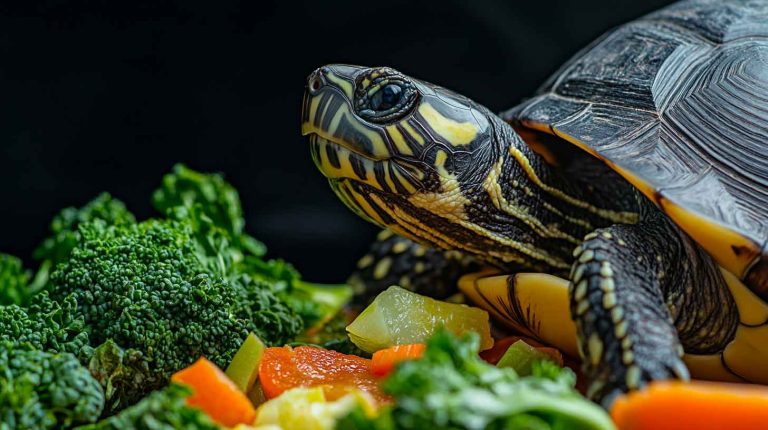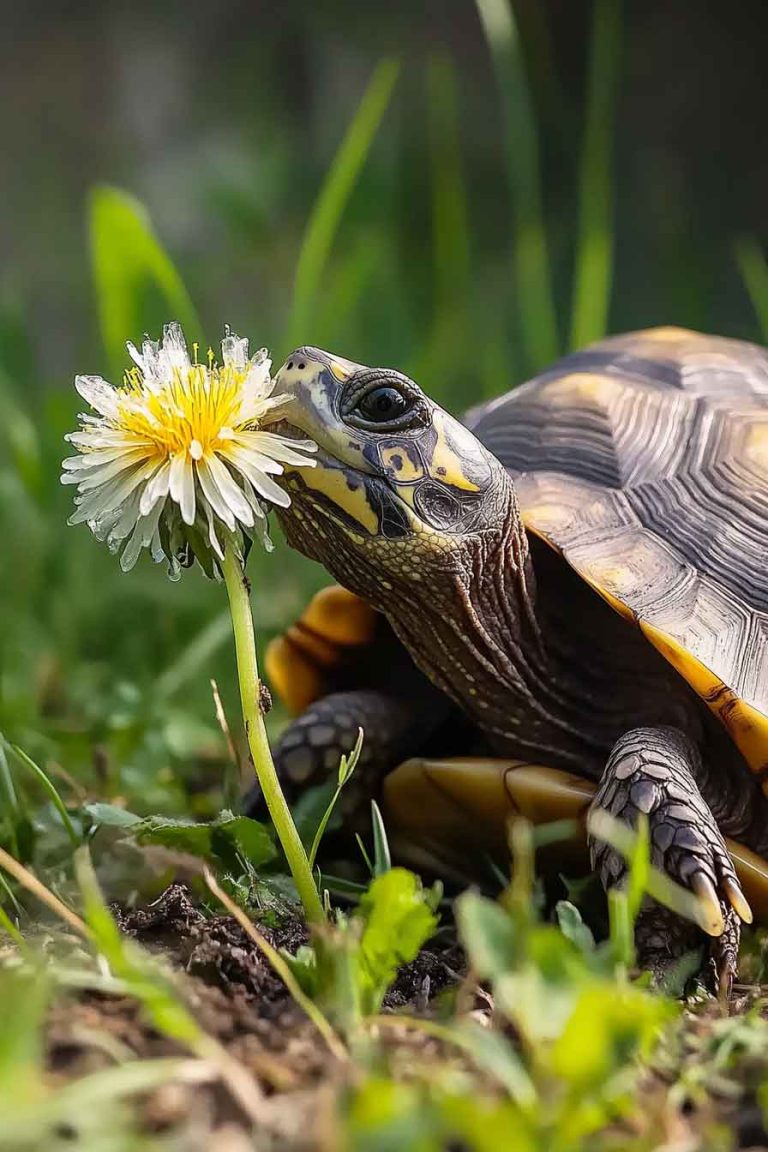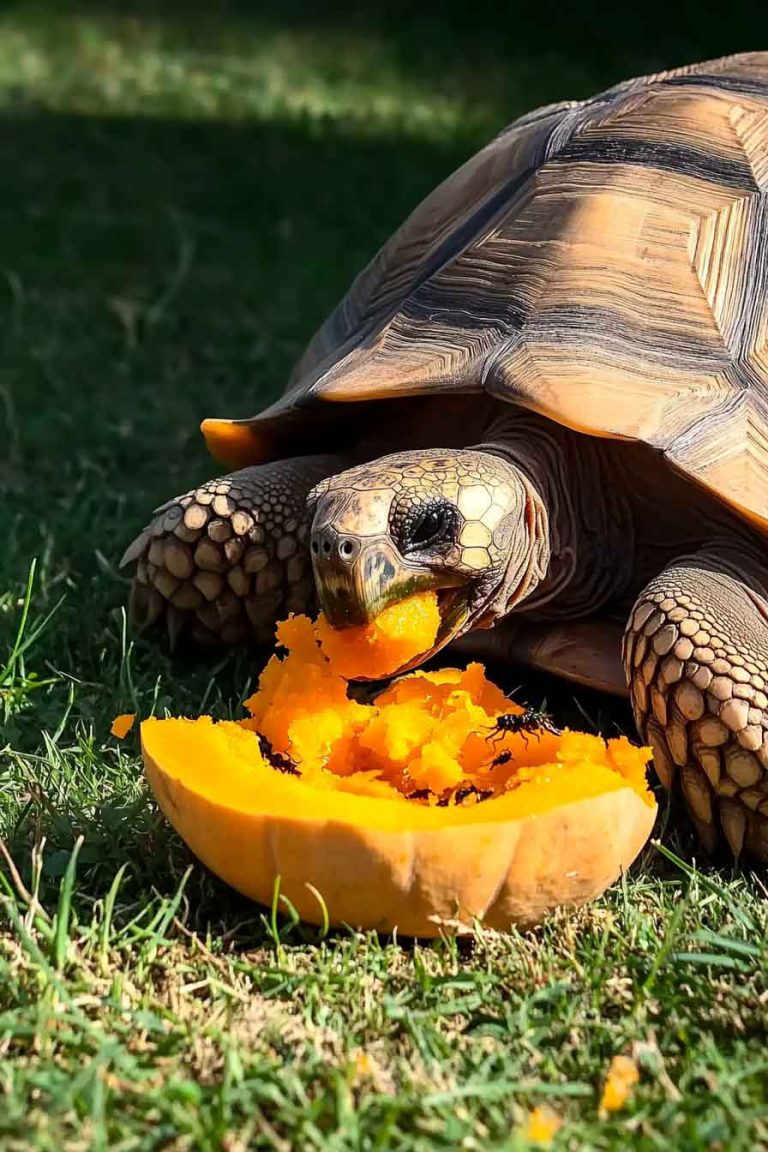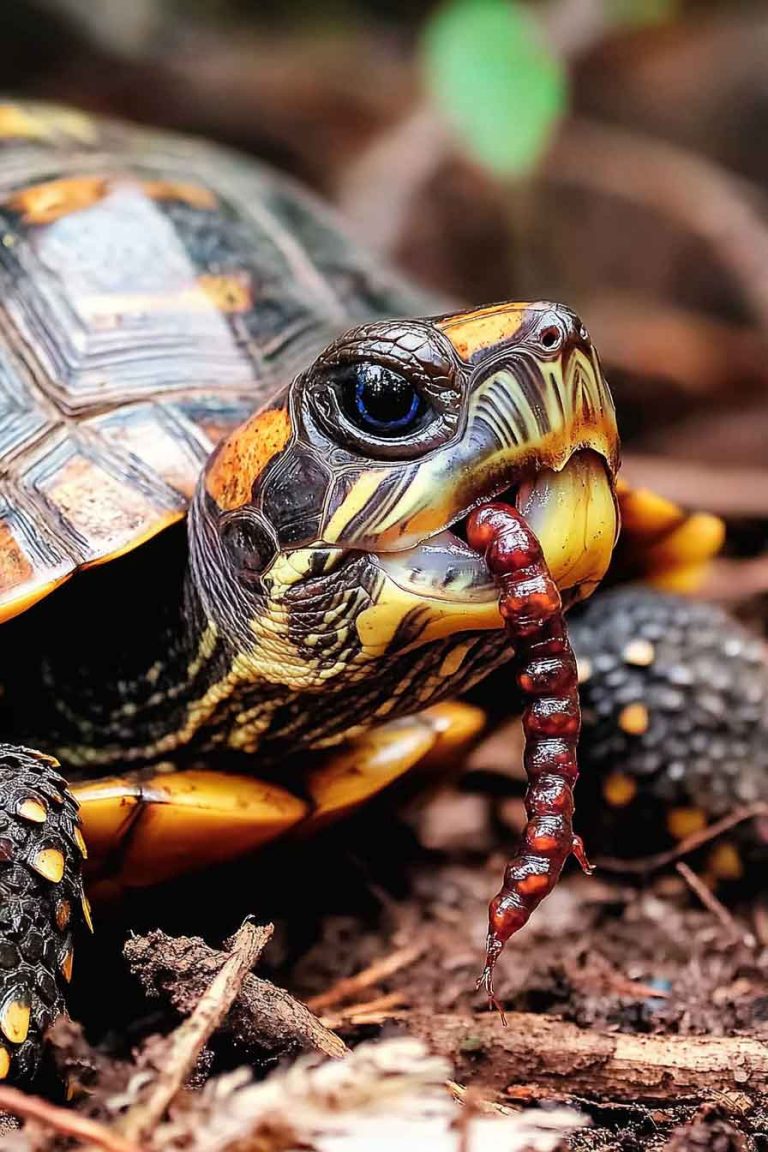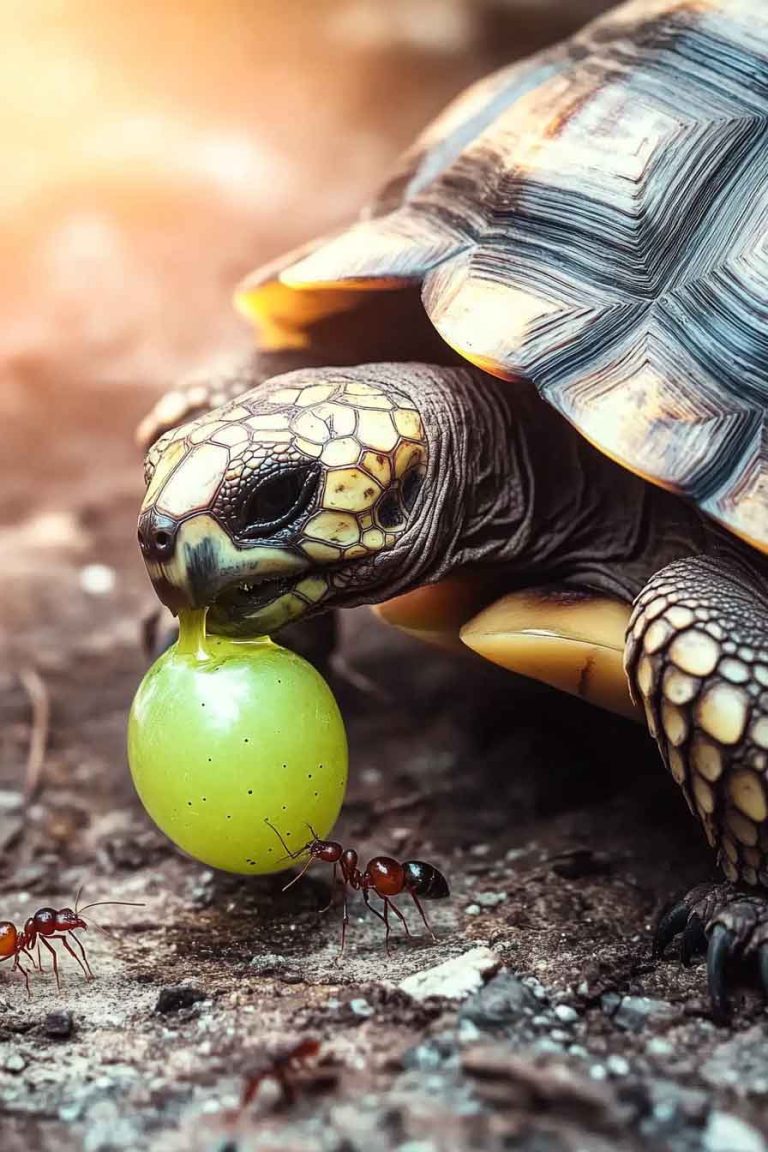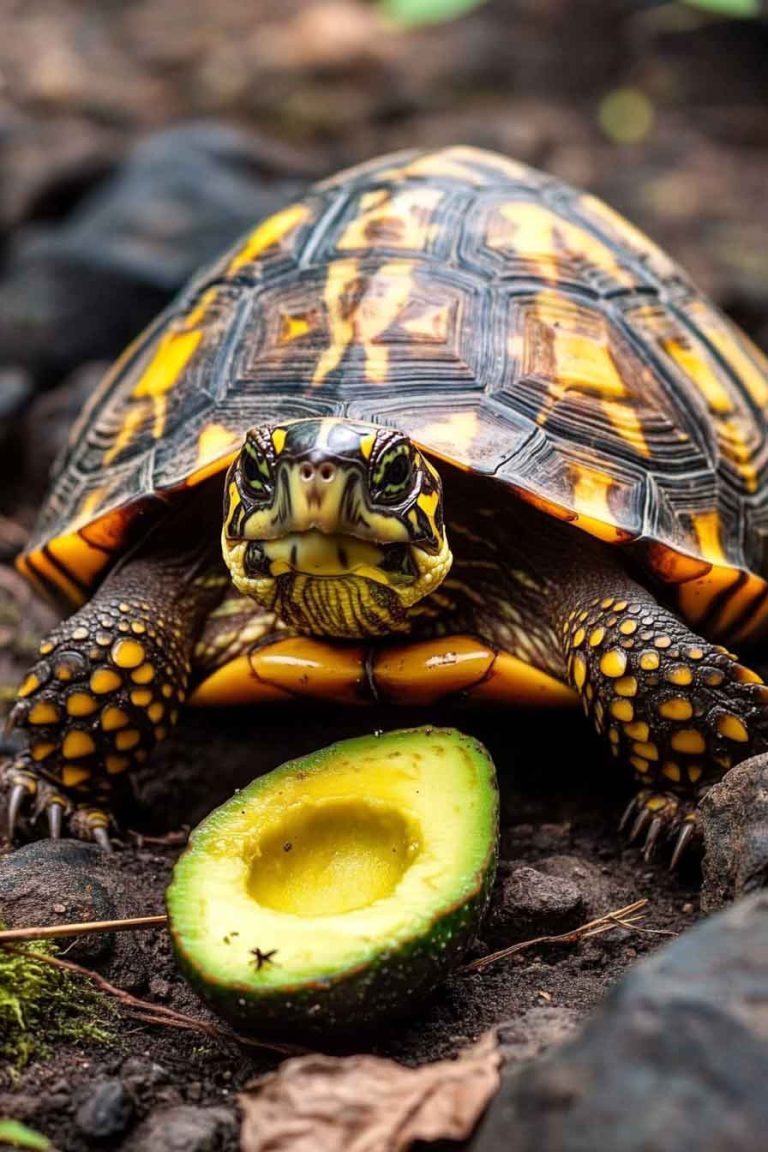Can Turtles Eat Bananas? Safe or Risky for Your Pet Turtle?
If you’re a turtle owner like me, you’ve probably found yourself wondering whether you can share some of your favorite fruits with your shelled companion. I know I have! Bananas are such a common household fruit, and it’s natural to want to treat our pets to something sweet and nutritious. But when it comes to…
If you’re a turtle owner like me, you’ve probably found yourself wondering whether you can share some of your favorite fruits with your shelled companion. I know I have! Bananas are such a common household fruit, and it’s natural to want to treat our pets to something sweet and nutritious. But when it comes to turtles and bananas, there’s more to consider than you might think.
So, can turtles eat bananas? The answer is yes, but with important limitations. Turtles can eat bananas occasionally as a treat, but they shouldn’t be a regular part of their diet. While bananas aren’t toxic to turtles like some other foods, they’re high in sugar and phosphorus, which can cause health issues if fed too frequently or in large quantities.
In this comprehensive guide, I’ll walk you through everything you need to know about feeding bananas to your turtle. I’ll cover the nutritional breakdown, potential risks, proper portions, and safer alternatives. Keep reading to ensure you’re making the best dietary choices for your beloved pet.
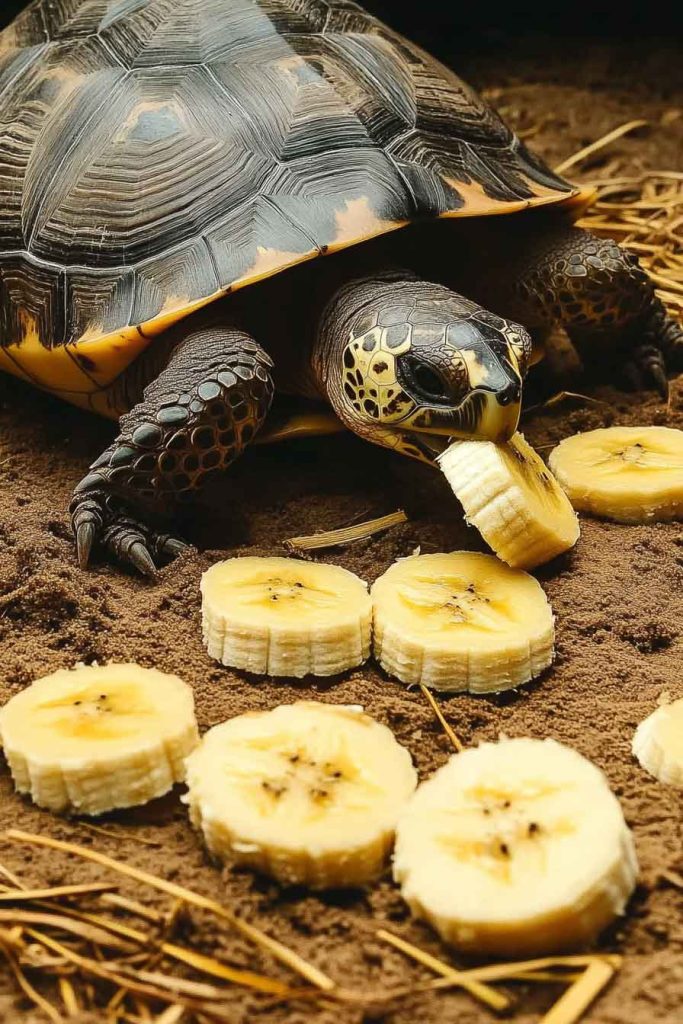
Can You Feed Bananas To Your Pet Turtle?
The short answer is yes, but only sparingly. Unlike some foods that are completely off-limits to turtles, bananas fall into the “occasional treat” category. I’ve learned through experience and research that moderation is absolutely key when it comes to feeding bananas to turtles.
Many turtle owners assume that since bananas are natural and healthy for humans, they must be good for turtles too. While this logic isn’t entirely wrong, it’s not entirely right either. Turtles have very different nutritional needs and digestive systems compared to us humans.
Let me break down the nutritional content of bananas so you can understand why I recommend caution. Here’s what you’ll find in 100 grams of banana:
- Carbohydrates: 22.84 g
- Sugar: 12.23 g
- Protein: 1.09 g
- Calcium: 5 mg
- Phosphorus: 22 mg
- Vitamin C: 8.7 mg
- Potassium: 358 mg
- Magnesium: 27 mg
- Fiber: 2.6 g
Looking at these numbers, you can see why I’m cautious about recommending bananas as a regular food for turtles. The high sugar content is the first red flag – turtles aren’t designed to process large amounts of sugar, and too much can lead to digestive upset and other health issues.
The calcium to phosphorus ratio is another concern. Turtles need approximately a 2:1 calcium to phosphorus ratio in their diet for optimal health. Bananas have a ratio that’s heavily skewed toward phosphorus (about 1:4), which can interfere with calcium absorption if fed regularly.

Do Turtles Like Bananas?
In my experience, most turtles absolutely love bananas! The sweet taste and soft texture make bananas very appealing to many turtle species. I’ve watched my own turtles eagerly gobble up small pieces of banana whenever I’ve offered them as treats.
However, just because turtles enjoy bananas doesn’t mean they should eat them frequently. Think of it like candy for kids – they love it, but that doesn’t make it good for them in large quantities. Turtles don’t have the instinct to regulate their sugar intake the way they might with other foods.
The natural sweetness of bananas can actually be problematic because it can make turtles less interested in their regular, more nutritionally appropriate foods. I’ve noticed that some turtle owners fall into the trap of giving too many sweet treats because their pets seem to enjoy them so much.
Health Risks for Turtles Eating Bananas
While bananas aren’t toxic to turtles, there are several health risks associated with feeding them too frequently or in large quantities. Let me walk you through the main concerns I’ve identified through research and consultation with veterinarians.
Digestive Issues
The high sugar content in bananas can wreak havoc on a turtle’s digestive system. Turtles evolved to eat foods that are much lower in sugar than modern fruits like bananas. When they consume too much sugar, it can lead to:
- Diarrhea
- Stomach upset
- Fermentation in the gut
- Disruption of healthy gut bacteria
I’ve seen cases where turtle owners reported loose stools and digestive distress after their pets consumed too much banana. The turtle’s digestive system simply isn’t equipped to handle such concentrated sweetness.
Calcium and Phosphorus Imbalance
This is perhaps the most serious long-term risk of feeding bananas regularly. As I mentioned earlier, bananas have a poor calcium to phosphorus ratio for turtles. When phosphorus levels are too high relative to calcium, several problems can occur:
The excess phosphorus can bind with calcium in the turtle’s system, making it unavailable for important biological functions. This can lead to:
- Metabolic Bone Disease (MBD)
- Soft shell syndrome
- Weakened bones
- Deformed shell growth
- Increased susceptibility to shell injuries
I cannot stress enough how serious these conditions can be. Metabolic Bone Disease is particularly devastating and can be life-threatening if left untreated.
Obesity and Related Health Problems
Bananas are relatively high in calories for their size, and the sugar content can contribute to weight gain if fed regularly. Overweight turtles face numerous health challenges:
- Difficulty retracting into their shells
- Increased stress on organs
- Reduced mobility
- Higher risk of other health conditions
Blood Sugar Spikes
While turtles don’t develop diabetes the same way humans do, sudden spikes in blood sugar from high-sugar foods like bananas can still cause metabolic stress. This is especially concerning for older turtles or those with existing health conditions.

How Much Banana Should Turtles Eat?
If you decide to offer banana as an occasional treat, portion control is absolutely critical. Based on my research and veterinary recommendations, here’s what I suggest:
For Adult Turtles:
- Frequency: No more than once every 2-3 weeks
- Portion size: A piece no larger than the size of your turtle’s head
- Preparation: Remove the peel and cut into small, manageable pieces
For Juvenile Turtles:
- Frequency: Even less frequently than adults – perhaps once a month
- Portion size: Half the size recommended for adults
- Extra caution: Young turtles are more sensitive to dietary imbalances
I always recommend treating banana as you would any dessert – a very special, very occasional indulgence rather than a regular part of the diet.
Can You Feed Bananas to Baby Turtles?
I strongly advise against feeding bananas to baby turtles. Here’s why:
Baby turtles have even more sensitive digestive systems than adults, and their nutritional needs are more critical for proper development. The high sugar content and poor calcium-phosphorus ratio in bananas can be particularly harmful during this crucial growth period.
Young turtles need foods that support:
- Rapid shell development
- Bone growth
- Organ development
- Immune system maturation
Bananas simply don’t provide the nutritional profile needed for these important developmental processes. Instead, focus on age-appropriate commercial turtle foods and carefully selected vegetables that meet their specific nutritional requirements.
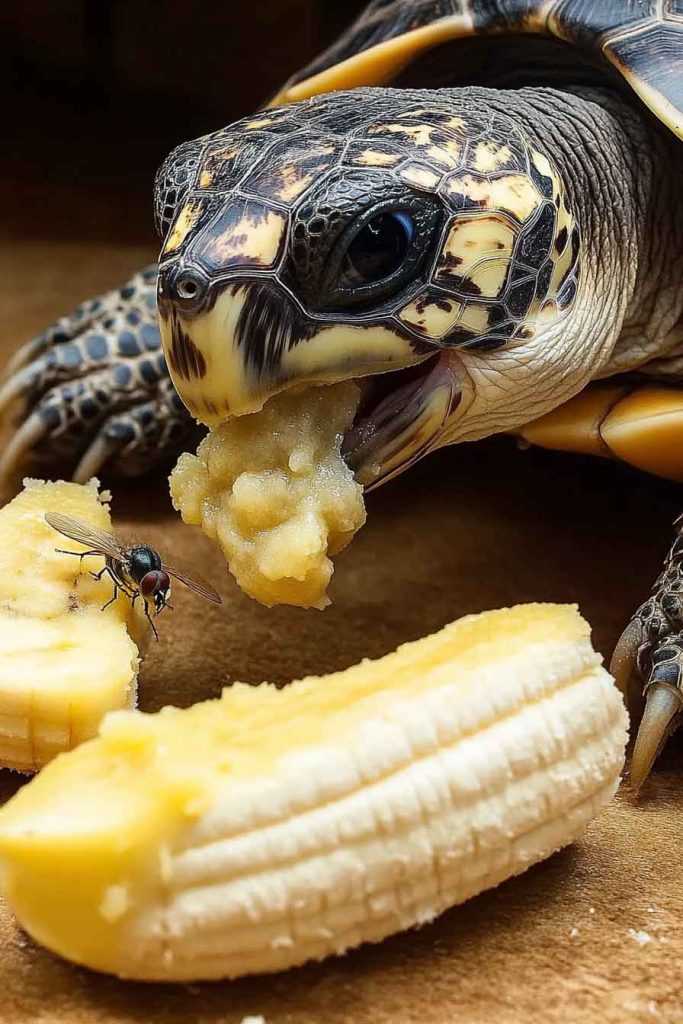
Species-Specific Considerations
Different turtle species have varying dietary needs and tolerances. Let me break down some specific considerations:
Box Turtles and Bananas
Box turtles are omnivores with a more varied diet than many other species. They can tolerate small amounts of banana slightly better than strictly herbivorous species, but the same precautions apply. I still recommend limiting banana treats to once every few weeks.
Red-Eared Slider Turtles and Bananas
Red-eared sliders are particularly prone to digestive issues from high-sugar foods. Their diet should be primarily aquatic plants and appropriate commercial foods. If you choose to offer banana, make it extremely occasional and in very small portions.
Painted Turtles and Bananas
Painted turtles have similar dietary needs to red-eared sliders. They’re semi-aquatic and naturally eat a combination of plants and small animals. Bananas are far from their natural diet, so treat them as you would with red-eared sliders – very sparingly.
Russian Tortoises and Bananas
Russian tortoises are primarily herbivorous but come from arid environments where high-sugar fruits are rare. Their digestive systems are particularly sensitive to sugary foods. I recommend avoiding bananas entirely for Russian tortoises and similar desert species.
Better Alternatives to Bananas
Instead of bananas, I recommend these turtle-friendly options that provide better nutritional profiles:
Vegetables (Primary Focus)
- Dark leafy greens (collard greens, dandelion greens, mustard greens)
- Squash varieties
- Sweet potatoes (cooked, unseasoned)
- Carrots (in moderation)
- Bell peppers
Safer Fruit Options (Still Occasional Treats)
- Berries (strawberries, blueberries) – lower sugar than bananas
- Melon (small amounts)
- Papaya (good calcium content)
- Figs (better calcium-phosphorus ratio)
Commercial Foods
High-quality commercial turtle pellets should form the base of most pet turtles’ diets. These are formulated to meet their specific nutritional needs.
What To Do If Your Turtle Eats Too Much Banana
If your turtle accidentally consumes a large amount of banana, here’s what I recommend:
- Don’t panic – A one-time overconsumption isn’t usually immediately dangerous
- Monitor closely for signs of digestive upset (loose stools, lethargy, loss of appetite)
- Provide fresh water and ensure your turtle stays hydrated
- Withhold food for 24 hours to allow the digestive system to reset
- Resume normal diet gradually
- Contact a veterinarian if symptoms persist or worsen

Signs Your Turtle May Have Dietary Issues
Watch for these warning signs that your turtle’s diet may need adjustment:
- Soft or deformed shell
- Lethargy or reduced activity
- Changes in appetite
- Unusual behavior
- Digestive problems
- Difficulty moving or swimming
Creating a Balanced Diet Plan
Instead of focusing on treats like bananas, I encourage turtle owners to develop a comprehensive diet plan:
Daily: High-quality commercial turtle pellets appropriate for your species Regular: Dark leafy greens and appropriate vegetables Occasional: Small amounts of suitable fruits or other treats Never: Foods high in sugar, processed foods, or known toxic items
Frequently Asked Questions (FAQs)
Can box turtles eat banana peels? No, I don’t recommend feeding banana peels to any turtle species. The peels can be difficult to digest and may contain pesticide residues.
Can aquatic turtles eat bananas? Aquatic turtles like red-eared sliders and painted turtles can have very small amounts of banana as rare treats, but their digestive systems are particularly sensitive to high-sugar foods.
How often can I give my turtle banana? I recommend no more than once every 2-3 weeks for adult turtles, and even less frequently for juveniles. Baby turtles should not have bananas at all.
Are dried bananas better for turtles? No, dried bananas are actually worse because the sugar is more concentrated. Stick with fresh banana if you choose to offer it at all.
Can wild turtles eat bananas? While wild turtles might occasionally encounter fallen fruit, bananas aren’t part of most wild turtles’ natural diets. It’s best not to feed wild turtles.
Conclusion
After years of turtle keeping and extensive research, my position on bananas for turtles is clear: they can be an occasional treat but should never be a regular part of your turtle’s diet. The high sugar content and poor calcium-phosphorus ratio make bananas risky if fed frequently.
I understand the temptation to share our favorite foods with our beloved pets, but responsible turtle ownership means prioritizing their long-term health over short-term enjoyment. There are many better options for treating your turtle that won’t compromise their nutritional needs.
Remember, a healthy turtle is a happy turtle. Focus on providing a balanced diet based primarily on species-appropriate commercial foods and vegetables, with only very occasional fruit treats. Your turtle will thank you with years of healthy, active companionship.
If you’re ever unsure about what to feed your turtle, I always recommend consulting with a veterinarian who has experience with reptiles. They can provide personalized advice based on your specific turtle’s needs, age, and health status.


